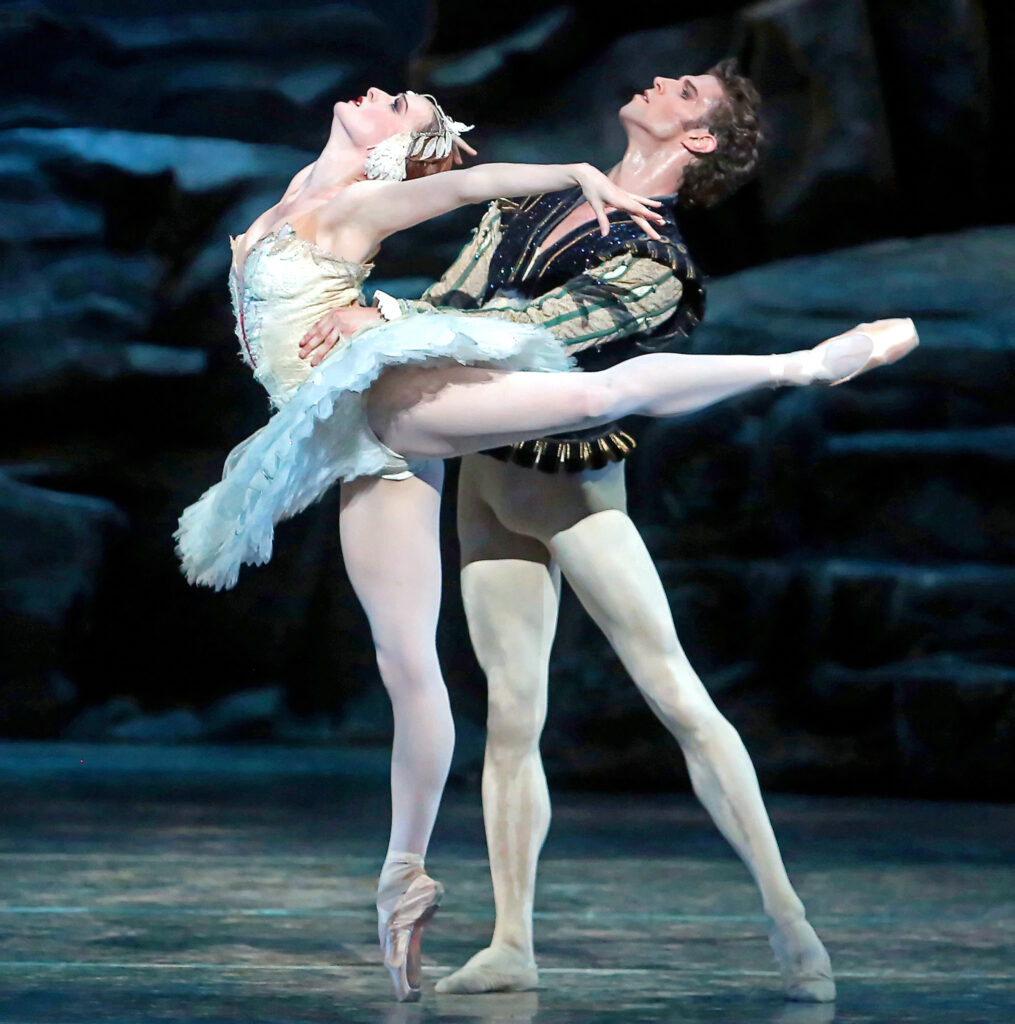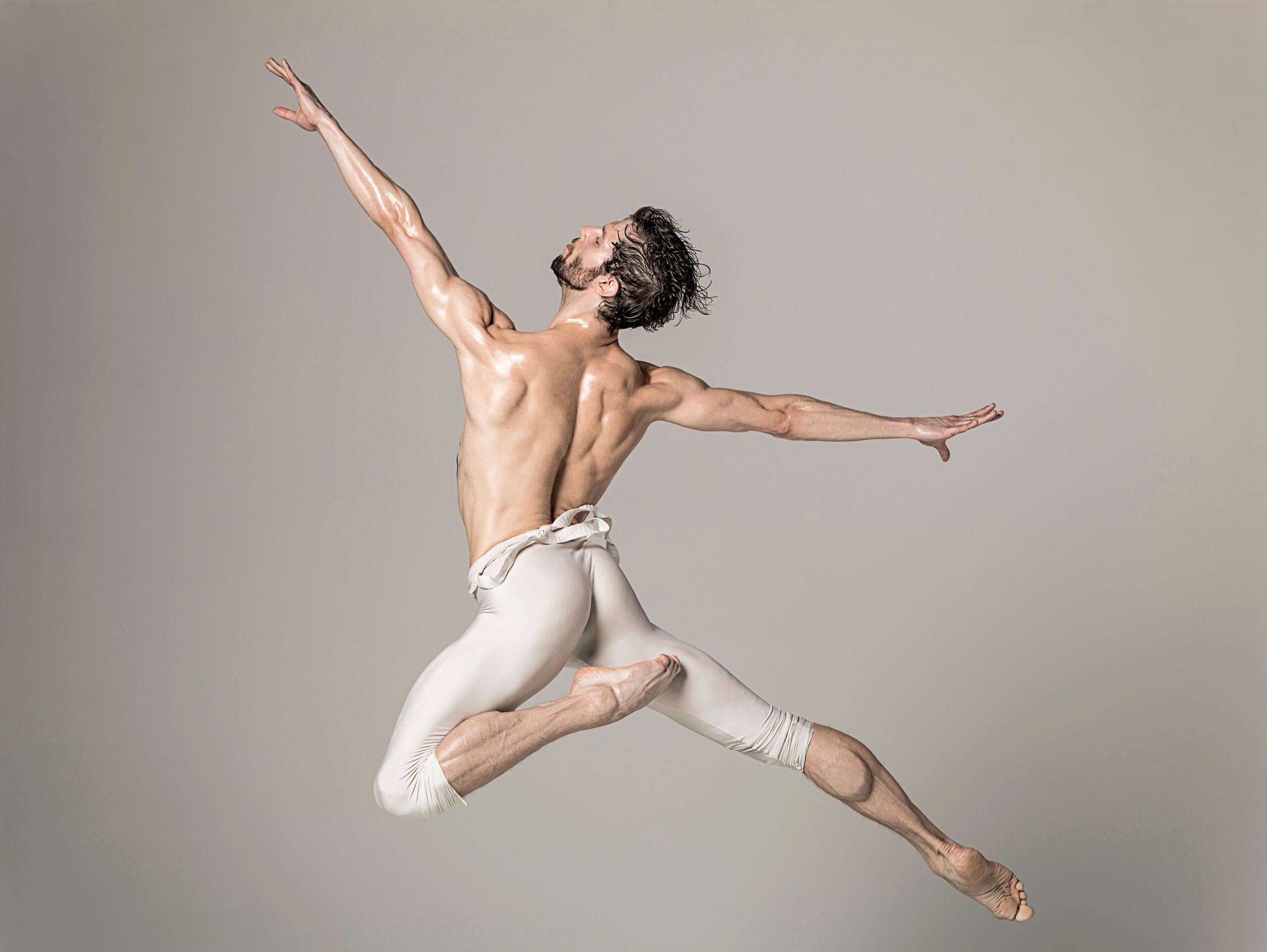James Whiteside on Returning to the Stage After Injury and His New Podcast
James Whiteside is a consummate multi-hyphenate. The American Ballet Theatre principal is also a choreographer, author, singer and drag queen. And now, Whiteside is back on the air waves with a new podcast, “Front Row.” The show, out every Wednesday and available on Spotify, Apple and everywhere podcasts are available, features Whiteside sitting down with a high-profile artist to discuss creativity. Whiteside and his guests get into the creative process as well as the fine line between artistic and business success.
Whiteside’s new podcasting venture came to fruition during a tremendously difficult period in his life. In December of 2021, Whiteside ruptured a tendon in his knee mid-performance of The Nutcracker. The year that followed found him in full recovery mode, making it all the better that the dancer has always had so many creative passions off of ABT’s stage. Pointe spoke with Whiteside to hear all about his new podcast, how he’s managed his recovery and how it feels to be back onstage.
Your new podcast, “Front Row,” premiered last month. What inspired you to create this show?
When I had my knee injury, I thought it would be a good time to bring back a podcast. In the past, I did a podcast from my dressing room at the Metropolitan Opera House during ABT’s spring season—called “The Stage Rightside with James Whiteside”—that was a very casual, conversational chat with people I work with. I loved doing that, and I thought I’d bring it back and upgrade it to make it a little bit more formal and planned out. So over the past year, I’ve been collecting interviews with artists and creatives that inspire me, and that I’ve met through my travels and life as a dancer.
The episodes you’ve already released feature interviews with fashion mogul Isaac Mizrahi, interior designer Jim Luigs, Juilliard dance director Alicia Graf Mack, opera star Anthony Roth Costanzo and pop singer Rozzi. Who else can audiences look forward to hearing from?
I’ve got Isabella Boylston and Misty Copeland, both ballerinas and friends of mine. I have actress Jennifer Garner, of course, the biggest ballet fan out there. I also have Ari Shapiro, the journalist and singer, Susan Jaffe, the new director of ABT, and Eric Winterling, the costume designer and owner of his own atelier, who builds everything from The Gilded Age on HBO to The Marvelous Mrs. Maisel to opera and Broadway shows like Funny Girl. It’s been really fun getting to know people that I work with frequently in a more intimate setting.
Was there a learning curve for you, in terms of figuring out how to get your guests to open up about their creativity?
Yes, because the whole point of the podcast is to give people an insight into how to make art a viable business. So I’m asking all these people how they make money doing what they do and their backstory, because everyone’s story tells a lot about how they got to where they are today. It’s about the business of creativity, but it’s also conversation with people I respect and admire.
I’m sure you’re somewhat exhausted from talking about this, but can you fill readers in on your injury, recovery and how you’re feeling now?
I ruptured my patellar tendon in December of 2021. So it’s been a year and two months since my surgery to repair my tendon. It’s been a very long, arduous journey to get back onstage. And I actually very happily got back onstage in The Nutcracker this past December, so just a year later. I’m continuing to strengthen and get better, but it takes a lot of time and patience and diligence.

Going back into Nutcracker, how did you deal with feelings of anxiety when dancing the same steps in which you were injured last year?
I was very forgiving with myself. And I had a great support system with my partner Isabella, the company here at ABT and people all over the world who have been so generous with their empathy on the internet and such. My fear wasn’t that I was going to reinjure myself so much as just not looking up to standard.
You made a choice to post about your recovery process openly online. What led you to that decision?
I had read an article about professional athletes and how when they talk about what happens to them and their injury, the mental aspects of recovery become easier, and it’s not this sort of shameful, hidden thing. I can be pretty private emotionally, and so I thought it would really benefit me to be open and not be squeamish about the gory details. And it really helped.
What kind of feedback did you get on those posts?
I got so many messages from dancers, from athletes, from parents of young dancers who’ve had traumatic injuries. It was incredibly moving and touching to hear the stories of other people.
Later this month you’ll be back onstage again, dancing Romeo and Juliet at The Kennedy Center. How does it feel to get back into a major role like that after so much time off?
Romeo is one of my favorite roles that I do here at ABT. There’s so much opportunity for storytelling and growth from year to year. I’m dancing with Gillian Murphy, who I’ve danced with for many years at ABT. The partnership feels very comfortable and mature and fabulous. It’s like we get in a car and it’s a really smooth ride. I just can’t wait to get back out there.
What did you learn from your recovery process that might be particularly potent for Pointe readers?
I cannot stress how important diligence and patience are. You have to work on your recovery every single day. And be kind to yourself. You have to be patient because recovery does not feel linear. Some days you feel fabulous, some days you feel like garbage. That’s okay. Do things you love, hang out with your friends, go to movies and museums. Do things that enrich your life, because it can otherwise be depressing.
Between your work at ABT, choreography projects, your recent memoir Center Center, your musical career as JbDubs and now the podcast, you’re balancing so many different creative pursuits. How do you juggle everything?
I don’t really feel like I’m juggling anything! I’m very focused on what I want to do, and when I want to do something I try really hard to make it happen. I don’t feel like I’m juggling at all—it’s who I am, baked into my person.






